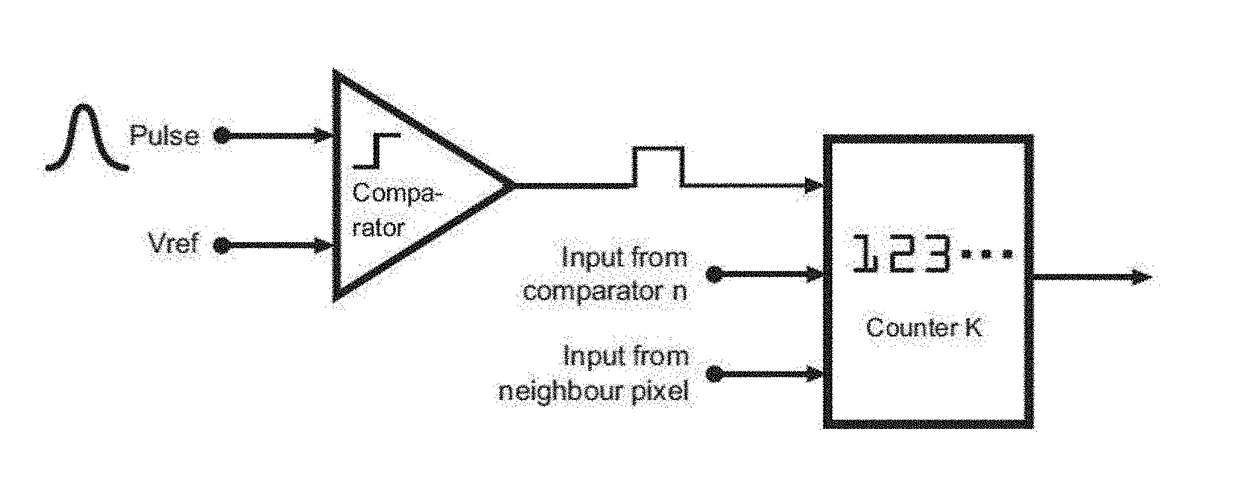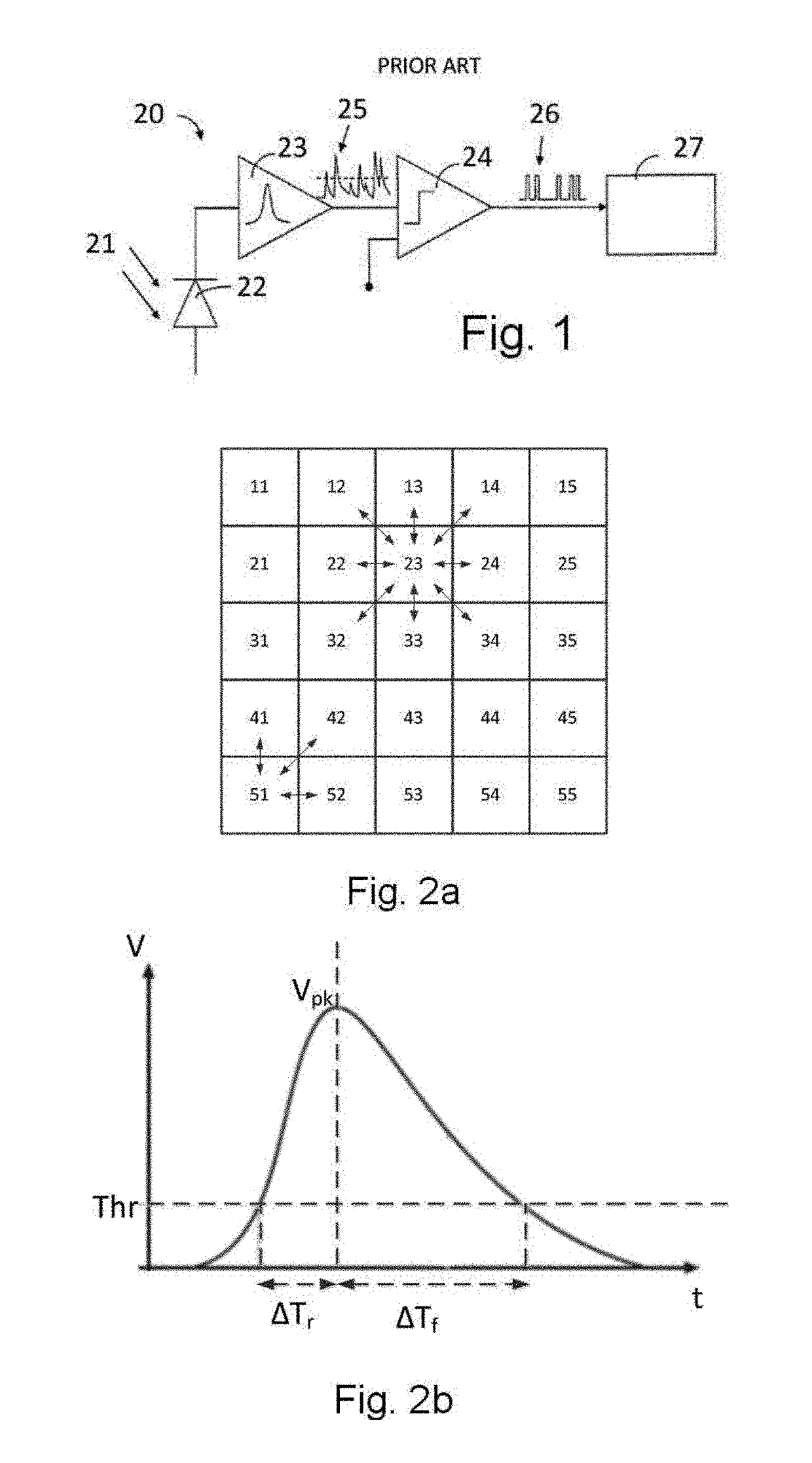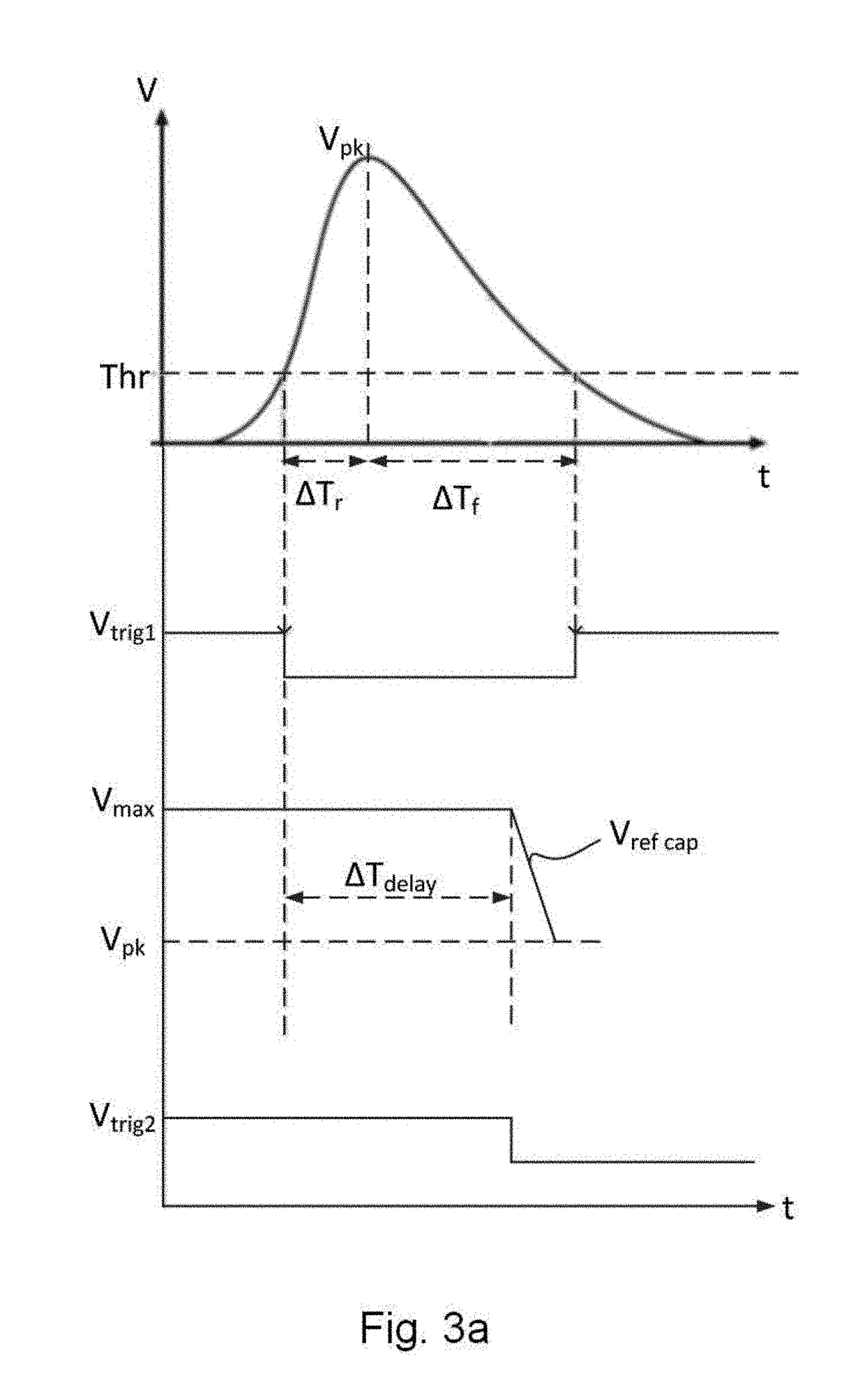Photon counting
a technology of photon counting and detectors, applied in the field of photon counting, can solve the problems of inability to achieve, reduce the contrast of images, and the detector size of photon counting can be small, so as to achieve a relatively low threshold
- Summary
- Abstract
- Description
- Claims
- Application Information
AI Technical Summary
Benefits of technology
Problems solved by technology
Method used
Image
Examples
Embodiment Construction
[0039]FIG. 1 schematically illustrates a prior art method and system for photon counting. Reference sign 20 refers to a pixel of a pixelated electrode with corresponding detector material. X-ray photons 21 can impinge on a phototransducer such as a photodiode 22. This can create a small charge packet of electrons, which can be shaped to a pulse 25 by a pulse shaper circuit 23. A comparator 24 or “discriminator” compares the generated pulses 25 to a reference value or trigger level.
[0040]Every time the amplitude of the pulses 25 exceeds the trigger level, a first value, for example “high” or a digital one, is assigned to the output signal of the comparator 24, and every time the pulses are below the trigger level, a second value, for example “low” or digital zero, is assigned to the output signal of the comparator 24.
[0041]This way, a binary signal is generated, comprising a pulse train 26. The pulses in the pulse train 26 are then counted by means of a digital counter 27 in order to...
PUM
 Login to View More
Login to View More Abstract
Description
Claims
Application Information
 Login to View More
Login to View More - R&D
- Intellectual Property
- Life Sciences
- Materials
- Tech Scout
- Unparalleled Data Quality
- Higher Quality Content
- 60% Fewer Hallucinations
Browse by: Latest US Patents, China's latest patents, Technical Efficacy Thesaurus, Application Domain, Technology Topic, Popular Technical Reports.
© 2025 PatSnap. All rights reserved.Legal|Privacy policy|Modern Slavery Act Transparency Statement|Sitemap|About US| Contact US: help@patsnap.com



